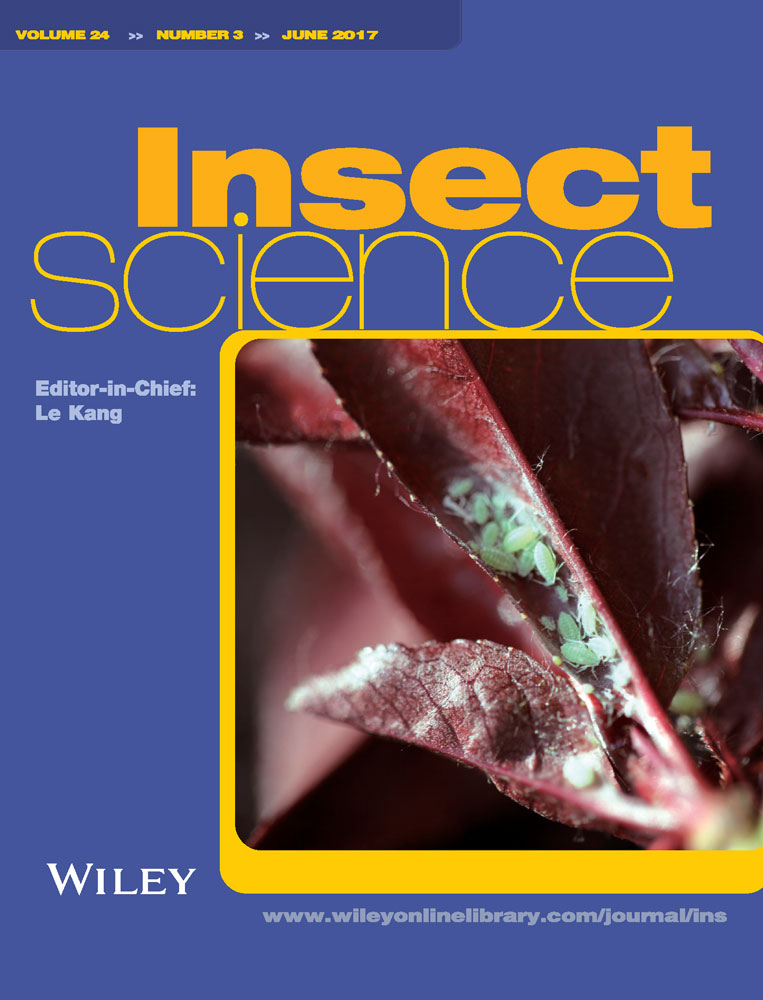Ver ítem
- xmlui.general.dspace_homeCentros Regionales y EEAsCentro Regional Patagonia NorteEEA Alto ValleArtículos científicosxmlui.ArtifactBrowser.ItemViewer.trail
- Inicio
- Centros Regionales y EEAs
- Centro Regional Patagonia Norte
- EEA Alto Valle
- Artículos científicos
- Ver ítem
Effects of chlorpyrifos on enzymatic systems of Cydia pomonella (Lepidoptera: Tortricidae) adults
Resumen
The control program of codling moth (Cydia pomonella L.) in the Río Negro and Neuquén Valley is intended to neonate larvae. However, adults may be subjected to sublethal pesticide concentrations generating stress which might enhance both mutation rates and activity of the detoxification system. This study assessed the exposure effects of chlorpyrifos on target enzyme and, both detoxifying and antioxidant systems of surviving adults from both a laboratory
[ver mas...]
The control program of codling moth (Cydia pomonella L.) in the Río Negro and Neuquén Valley is intended to neonate larvae. However, adults may be subjected to sublethal pesticide concentrations generating stress which might enhance both mutation rates and activity of the detoxification system. This study assessed the exposure effects of chlorpyrifos on target enzyme and, both detoxifying and antioxidant systems of surviving adults from both a laboratory susceptible strain (LSS) and a field population (FP). The results showed that the FP was as susceptible to chlorpyrifos as the LSS and, both exhibited a similar chlorpyrifos‐inhibitory concentration 50 (IC50) of acetylcholinesterase (AChE). The FP displayed higher carboxylesterase (CarE) and 7‐ethoxycoumarine O‐deethylase (ECOD) activities than LSS. Both LSS and FP showed an increase on CarE activity after the exposure to low‐chlorpyrifos concentrations, followed by enzyme inhibition at higher concentrations. There were no significant differences neither in the activities of glutathione S‐transferases (GST), catalase (CAT) and superoxide dismutase (SOD) nor in the reduced glutathione (GSH) content between LSS and FP. Moreover, these enzymes were unaffected by chlorpyrifos. In conclusion, control adults from the FP exhibited higher CarE and ECOD activities than control adults from the LSS. AChE and CarE activities were the most affected by chlorpyrifos. Control strategies used for C. pomonella, such as rotations of insecticides with different modes of action, will probably delay the evolution of insecticide resistance in FPs from the study area.
[Cerrar]

Autor
Parra Morales, Laura Beatriz;
Alzogaray, Raúl Adolfo;
Cichon, Liliana;
Garrido, Silvina Alejandra;
Soleño, Jimena;
Montagna, Cristina Monica;
Fuente
Insect Science 24 (3) : 455-466 (June 2017)
Fecha
2017-06
Editorial
Wiley
ISSN
1672-9609
Formato
pdf
Tipo de documento
artículo
Palabras Claves
Derechos de acceso
Restringido
 Excepto donde se diga explicitamente, este item se publica bajo la siguiente descripción: Creative Commons Attribution-NonCommercial-ShareAlike 2.5 Unported (CC BY-NC-SA 2.5)
Excepto donde se diga explicitamente, este item se publica bajo la siguiente descripción: Creative Commons Attribution-NonCommercial-ShareAlike 2.5 Unported (CC BY-NC-SA 2.5)

